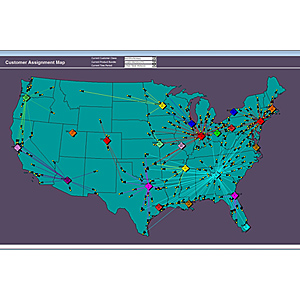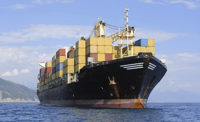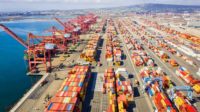INSIGHT, Inc.,Manassas, Va., released Version 4.6 of SAILS and Insight Enterprise Optimizer (IEO), the industry reference standards for strategic supply chain design. The latest versions incorporate new features that address sustainability, manufacturing options, transportation rate databases and managerial preferences.
design. The latest versions incorporate new features that address sustainability, manufacturing options, transportation rate databases and managerial preferences.
SAILS V4.6 newest features include:
Sustainability.
• Ability to simultaneously measure and report energy consumption and carbon emissions for the entire supply chain, including procurement, manufacturing, warehousing and transportation activities.
• Ability to report ton-miles (or equivalent) for estimating energy efficiency and carbon emissions for various transport modes.
• Ability to optimize the network with respect to cost, time, energy or carbon, while simultaneously reporting all other measures, thereby enabling the user to directly compare network designs across scenarios with varying optimization criteria (i.e. what is the least expensive network, the most energy-efficient network, the network with the least carbon emissions, etc.).
• Incorporation of innovative research from the University of Rhode Island supply chain management program with respect to carbon emissions of various manufacturing processes.
Manufacturing processes.
• Improved representation of long-term capacity limits, such as those associated with contractual obligations, resulting in better procurement and production capacity planning and allocation, especially where volume discounts are applicable.
• Improved, yet sophisticated representation of the production lines and processes where multiple commodities compete for the same capacity, resulting in more accurate production capacity planning and allocation.
Managerial rules.
• Ability to specify minimum/maximum, volume, energy and carbon emission limits for arbitrary subsets of facility locations, production lines and processes, thus enabling the user to, for example, directly incorporate cap-and-trade-based carbon emission restrictions or limit the number of locations or processes of a specific type in a given area.
• Ability to specify managerial rules such as IF x happens THEN y MUST (MUST NOT) happen, which enables the user to easily assess the impact of such preferences or requirements with fewer model exercises and far less analysis effort.
INSIGHT, Inc.
703-366-3061
http://www.insightoutsmart.com
INSIGHT, Inc.,Manassas, Va., released Version 4.6 of SAILS and Insight Enterprise Optimizer (IEO), the industry reference standards for strategic supply chain design. The latest versions incorporate new features that address sustainability, manufacturing options, transportation rate databases and managerial preferences.
SAILS V4.6 newest features include:
Sustainability.
· Ability to simultaneously measure and report energy consumption and carbon emissions for the entire supply chain, including procurement, manufacturing, warehousing and transportation activities.
· Ability to report ton-miles (or equivalent) for estimating energy efficiency and carbon emissions for various transport modes.
· Ability to optimize the network with respect to cost, time, energy or carbon, while simultaneously reporting all other measures, thereby enabling the user to directly compare network designs across scenarios with varying optimization criteria (i.e. what is the least expensive network, the most energy-efficient network, the network with the least carbon emissions, etc.).
· Incorporation of innovative research from the University of Rhode Island supply chain management program with respect to carbon emissions of various manufacturing processes.
Manufacturing processes.
· Improved representation of long-term capacity limits, such as those associated with contractual obligations, resulting in better procurement and production capacity planning and allocation, especially where volume discounts are applicable.
· Improved, yet sophisticated representation of the production lines and processes where multiple commodities compete for the same capacity, resulting in more accurate production capacity planning and allocation.
Managerial rules.
· Ability to specify minimum/maximum, volume, energy and carbon emission limits for arbitrary subsets of facility locations, production lines and processes, thus enabling the user to, for example, directly incorporate cap-and-trade-based carbon emission restrictions or limit the number of locations or processes of a specific type in a given area.
· Ability to specify managerial rules such as IF x happens THEN y MUST (MUST NOT) happen, which enables the user to easily assess the impact of such preferences or requirements with fewer model exercises and far less analysis effort.
INSIGHT, Inc.
703-366-3061



